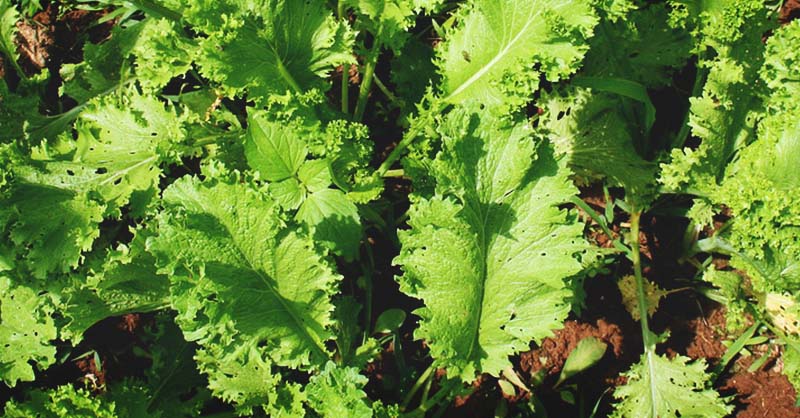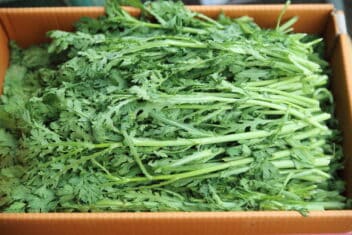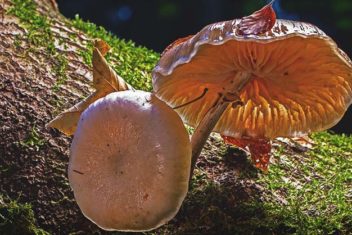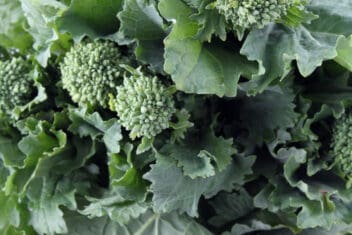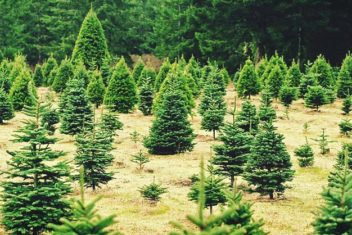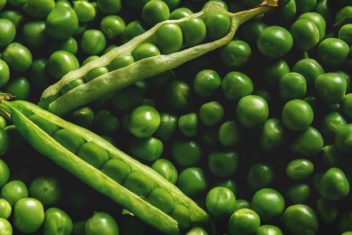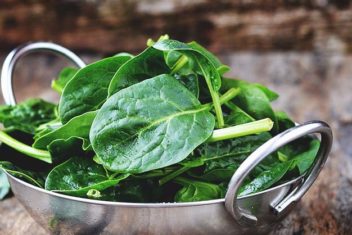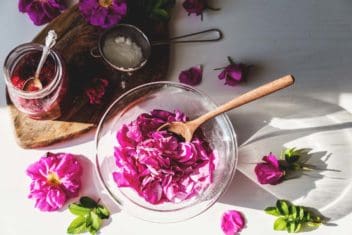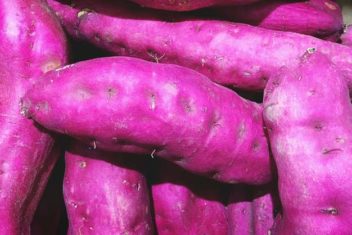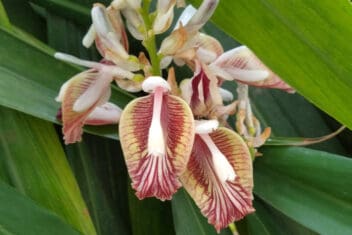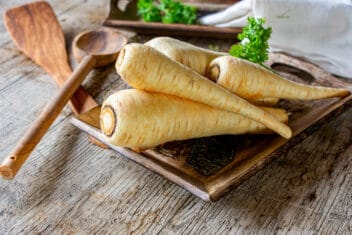Even though I was raised in the South, my family didn’t grow mustard greens. I know that’s sacrilegious if you are a southern girl reading this. Once I was an adult and had my own farm, I discovered the joy of growing mustard greens, and now I know how fabulous they are. Mustard greens add just the right amount of zing to dishes, and they’re easy-as-pie to raise.
They’re a versatile plant, too. You can grow mustard micro-greens in under a week, or you can wait and pluck the older leaves as you need them for a continuous crop. They also lend themselves to season extension and overwintering.
Outside of the South, mustard greens don’t get the love they deserve. The raw greens have a unique mustardy, horseradish-like flavor that’s heavenly in salads. Even people who don’t like the leaves raw find the cooked greens to be a mellower, peppery addition to stir-fries and casseroles.
Convinced you need mustard greens in your life? Here’s how to get started.
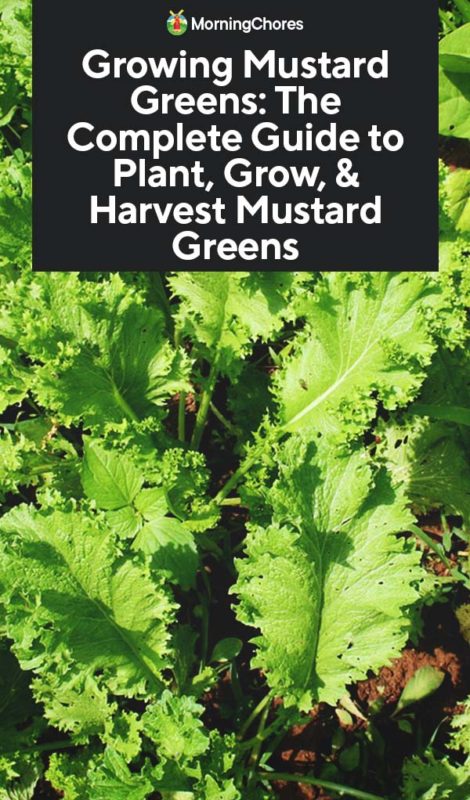
Mustard Green Varieties
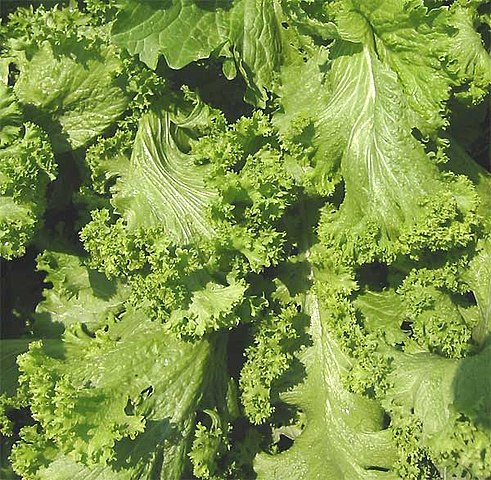
- Red Giant- Red Giant is my favorite mustard green. It’s excellent in salads, and the thick leaves stand up to cooking. This bright, peppery variety is from Japan and has a bold flavor with almost a raw garlic-like punch to it. It tolerates the summer sun but also thrives in part shade. It’s more insect resistant than other mustards and it’s pretty growing in the garden with its reddish-purple leaves. Matures in 40 days.
- Scarlet Frills – This is a spicy variety that looks as good as it tastes. The leaves are deep red and serrated. The leaves and stems are thinner than other types, and it doesn’t take cooking as well, so it’s perfect raw. It’s not heat-tolerant, so it’s best grown early and late in the season in warm areas.
- Green Wave – Green wave is slower to bolt than other varieties. It has a hot, spicy flavor and is an All American Selection (AAS) winner. It’s also cold-resistant and matures in 50 days. Green wave is high-yielding and can reach 2-feet in height.
- Ruby Streaks – This variety has gorgeous purple, lacy leaves. They’re pungent with a slightly sweet note that isn’t quite as powerful as other varieties. You can also eat the flowers, which are spicy. This type is cold hardy and grows quickly – baby leaves are ready in 20 days, and full-size leaves are ready in 45.
- Southern Giant – Another AAS winner, this plant has a milder flavor than some others. This is a slow-to-bolt heirloom that is a perennial favorite with cooks. It is cold-resistant and perfect for freezing. Young leaves mature in 50 days, older leaves in 70.
- Purplewave – Purplewave produces lacy leaves with a vaguely purple hue. They’re as pretty as they are tasty, with a spicy-hot kick. The plant is cold hardy and grows up to 18-inches tall. As a microgreen, you can harvest in 5 days. Young leaves are ready in 20 days, and mature leaves are good to go in 40-55 days.
- Carolina Broadleaf – The common “Florida Broadleaf” variety is having problems with blight, so breeders made this new type that’s resistant. It’s particularly tasty and can get large – up to 2-feet tall. Matures in 42 days.
- Mizuna – This green is indigenous to Japan and has a subtle flavor. The bright green, serrated leaves add a mellow spice to mixed salads. It’s both heat and cold tolerant and is slow to bolt. As good cooked as it is raw. It matures in 40-50 days.
Planting Mustard Greens
Growing mustard greens is refreshingly simple. They’re a great crop for extended harvests and can be grown in a variety of mediums. They do well in pots, raised beds, tunnels, hydroponics and as micro-greens.
Growing Zones
Mustard greens grow in zones 8-11.
Soil Requirements
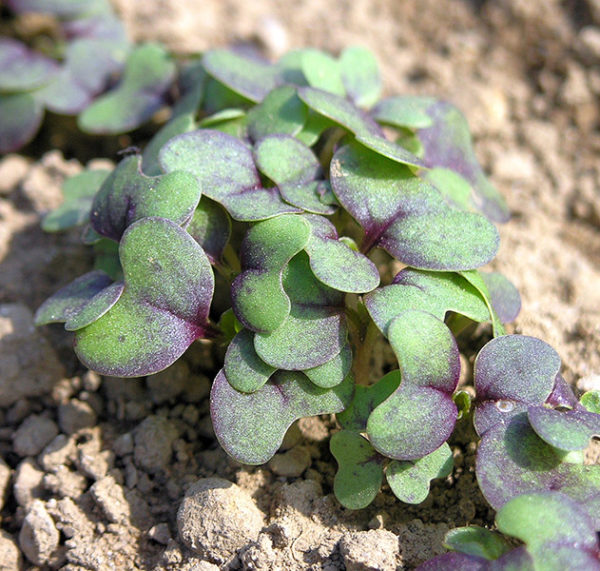
Growing mustard greens successfully requires the right kind of soil. They prefer a pH between 6.0-7.5 and soil that is well-drained, sandy and fertile.
Sun and Temperature Requirements
Mustard greens prefer full sun, but some varieties can also handle part shade. This is especially true if you are growing the plants to harvest young greens. They prefer temperatures between 50 and 75°F.
Spring Planting
Start plants indoors 4 weeks before the last frost date if you want greens early in the year.
You can also direct seed by sowing outside from early spring until early fall in most areas. Plant in a shallow furrow one-half inch deep, with 12 seeds per foot for baby greens. For full-sized plants sow seeds every 6-inches with 12-inches between rows.
Fall Planting
Mustard greens do well as a fall crop in warm regions. Direct-sow them in fall as temps start to cool, allowing 4-6 weeks before the first frost.
If you live in a hot climate, you may want to start seedlings indoors in the summer until the weather cools a bit. Slowly transition plants by bringing them outside during the cooler parts of the day.
I plant my fall greens in the garden with other cool weather crops in mid-September. I plant everything in a bed with four-foot hoops over it.
When the night starts to go below 40°F I place row fabric over the hoops. Depending on the weather I may pull back the row cover during the day. This provides us with fresh greens through December and even into January.
Seed Germination
Mustard greens take only 4-7 days to germinate in the right soil conditions.
Transplanting
Transplant when greens have developed 3 or 4 leaves, which usually happens around the 3-week mark. Harden them off for at least 7 days before putting them in a permanent location.
Succession Planting
Because mustard greens can be harvested around a month or so after planting, you can continually start a new crop every few weeks as long as you leave enough time before the frost. Keep in mind that you can pick several leaves off a plant at a time and allow new ones to spring up, so you can continually harvest from one plant.
Alternative Ways of Growing Mustard Greens
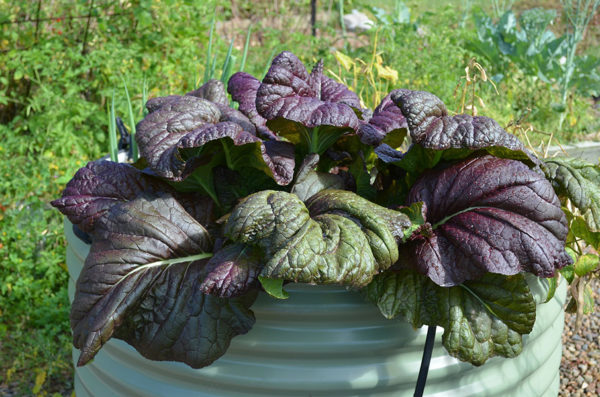
You can use some of the prettier mustard greens as decorative editions to planters or in edible landscaping. You can also grow them in the house during the winter to spice up sandwiches and salads.
Mustard microgreens are a tasty treat in the winter when everything else is dormant. Fill an indoor container with moistened potting soil and sprinkle seeds on top. Cover with a ventilated piece of plastic or glass to keep the earth moist and place near light.
Mustard greens also do well in hydroponic systems. The wick system works especially nicely.
Caring For Mustard Greens
Weeding
Keep your mustard green patch weeded as they do not like competition. Shepherds purse and pigweed should especially be kept out as they can spread disease and steal valuable nutrients.
Fertilizing
Growing mustard greens benefit from regular fertilizer. I use fish emulsion sprayed directly on the leaves every few weeks in the early morning when the stomata are open. You can also side-feed with a balanced fertilizer when plants are at least 5-inches tall.
Water Needs
Give growing mustard greens a steady water supply – about 1 to 2 inches per week.
Crop Rotation
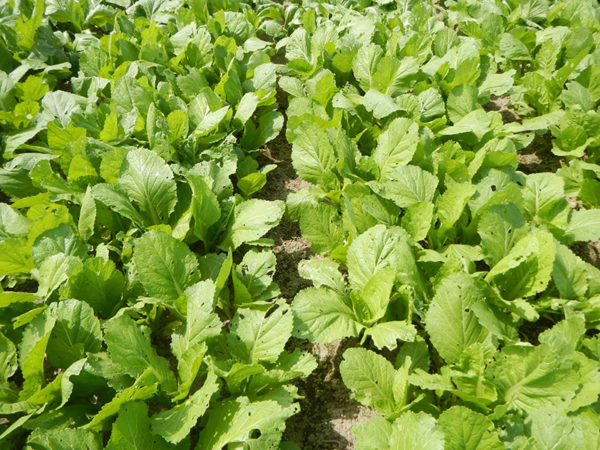
Crop rotation is particularly important when growing mustard greens because they’re in the brassica family. This family includes broccoli, cabbage, Brussels sprouts, collards, kale, radishes, and turnips.
Rotate so that plants in this family don’t follow each other within 3 years. This will help reduce their shared pests and diseases. Brassicas thrive following legumes because they are heavy nitrogen feeders and beans add nitrates to the soil. Don’t plant mustard greens following legumes if you experienced mold or mildew, however.
Wintering
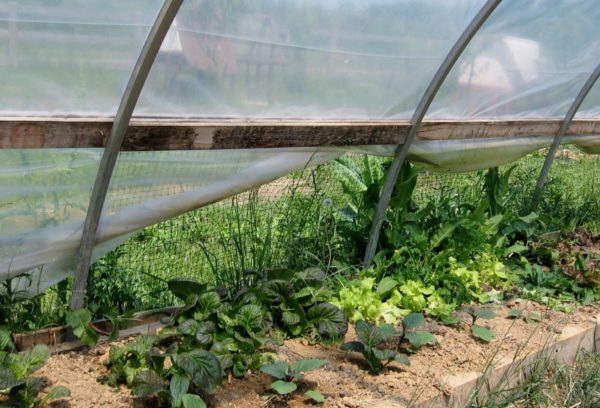
Photo by Ame Vanorio
Mustard greens are cold hardy and are one of the greens recommended by Eliot Coleman in his book “The Winter Harvest.” I’ve been successful in growing mustard greens in the greenhouse during the winter.
They grow slowly in the winter, so don’t be surprised if they don’t replace the leaves as fast as you harvest them. Many people think this is due to cold temperatures, but as Colemen points out, it’s more to do with lack of daylight.
Mustard Green Pests and Diseases
Like all brassicas, mustard greens are plagued by a few pests and diseases.
Flea Beetles
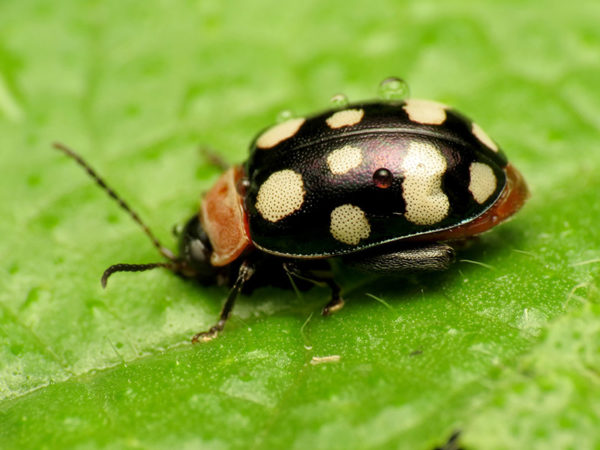
My biggest problem with growing mustard greens is flea beetles. Flea beetles are tiny black insects that eat small holes in the plant’s leaves.
To reduce flea beetle infestations, you can cover young plants with a floating row cover. Mulching with straw confuses flea beetles. They’re more common in spring and summer so you can time your planting for a fall harvest if you really struggle with this pest.
They’ll overwinter in your soil, so use fall control methods to eliminate them. You can also control them with white sticky traps. Biological OMRI controls such as neem oil will also help cut down the population.
Aphids
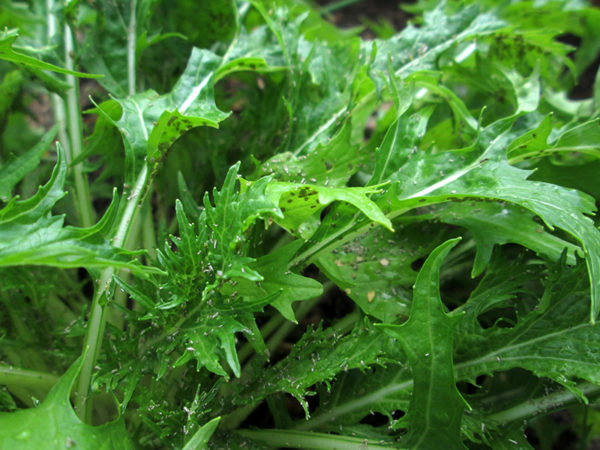
These little arachnids love green leaves and suck the fluids right out of the plant. They can reproduce rapidly, and you often won’t notice them until you have a serious infestation. You can use neem oil or pyrethrin to get rid of them, and you should encourage predators like ladybugs and parasitic wasps.
White Rust
White rust is a fungus that causes malformed leaves and flowers. Rotate crops and plant resistant varieties when you can.
Clubroot
Clubroot spreads readily and can last in the soil for nearly two decades. It can stunt growth and cause plants to wilt. Underneath the ground, the root will develop club-like swellings. Adding lime to soil can help control it. Rotate crops frequently to keep it from taking hold.
Alternaria Blight
This fungal pathogen likes warm, wet weather. It can cause damping off or leaf spot in older plants. Use copper or sulfur-based fungicides to control it. Keep pests off your plants because they spread the disease. Rotate crops and use drip irrigation to prevent it.
Diamondback Moth
Diamondback moths feed on cole crops, and they can stunt growth in growing mustard greens. Parasitic wasps and spiders like to dine on the larvae, so welcome them with open arms. You should also rotate your crops to discourage this pest.
Mustard Leafminer
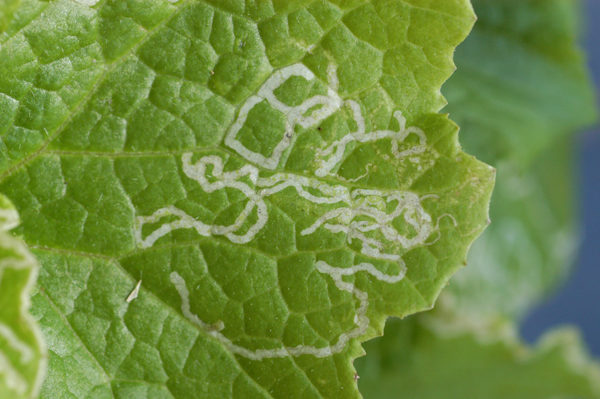
The leafminer got its name because it chews mine-like tunnels through your leaves, causing them to whither and dieback. Prevent them by covering seedlings with a crop cover and encourage parasitic wasps in your garden. Prune off any infected leaves and destroy.
Mustard Sawfly
Mustard sawfly grubs chew shot holes through leaves, and they can completely skeletonize a plant if you have a bad infestation. They can cause seedlings to die off entirely. The adult fly is orange with a black head, so if you see them around, check your plants for the larvae. Handpicking can keep a small infestation under control, or you can use insecticidal soaps.
If you have trouble with these pests, be sure to cultivate your soil several times over the winter to expose pupa overwintering in the ground.
Painted Bug
Also known as the bagrada bug, the painted bug is a major pest when growing mustard greens. The nymphs and adults suck the sap of leaves, causing them to wilt and die. You primarily find these in the Western states and parts of Texas. Keep weeds under control and till your soil in the fall to prevent them from taking hold in your crops. You can also encourage natural predators like spiders.
Downy and Powdery Mildew
Both downy and powdery mildew are problems for plants in the brassica family. They’re caused by a fungus that lives in the ground and can be carried via water particles. Things like fog, high humidity, rain, overhead irrigation, and even dew can cause it to spread.
Mildews cause chlorosis of the leaves and you can often see orange or grey blotches on the plants. Chlorosis is the lack of green color, and this interferes with photosynthesis.
Manage mildew by using a drip irrigation system, by cultivating your soil in the fall, and by maintaining a good crop rotation schedule. You can also use Actinovate, which is an OMRI-listed fungicide that is also a beneficial bacterium.
Companion Plants for Mustard Greens
As you can see, growing mustard greens suffer from a number of insect pests. One way to reduce the insects from feeding on your greens is to use trap crops. Trap crops draw bad insects away and encourage good insects.
Yarrow and dill are both excellent crops to plant near your greens because they attract ladybugs and lacewings, which feed on aphids. Plants in the mint family repel flea beetles, so plant some near your mustard greens if you struggle with the pest. The following plants all make good companions for growing mustard greens:
- Dill
- Fennel
- Tansy
- Yarrow
- Mint
- Corn
- Peas
- Buckwheat
- Mint
- Rosemary
- Thyme
- Beets
- Celery
- Carrots
- Lettuce
- Onions
- Cucumber
Don’t plant your mustard greens near your bean of any kind. Both of them are prone to molds and mildews, and it can spread among them.
- Soybeans
- Sunflower
- Beans
- Strawberries
Harvesting and Storing Mustard Greens
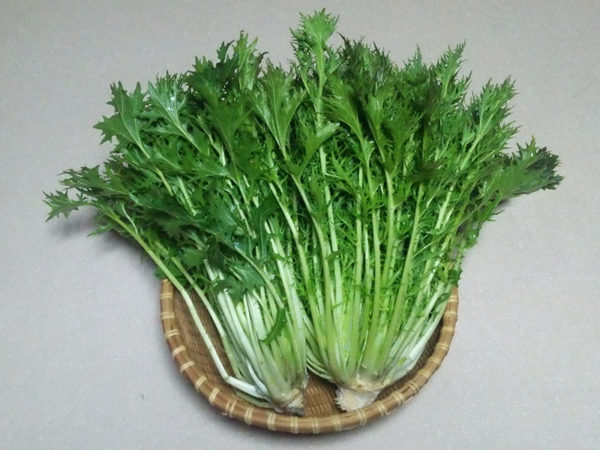
Mustard greens average 5 days to maturity for consumption as microgreens, 21 days until they’re ready to eat as baby leaves, and 37 days until maturity for full-sized leaves. Pick or snip off leaves as you are ready to eat them.
The plants are suited to a continual harvest. Cut the larger outer leaves off and let the inner leaves continue to grow.
You can keep mustard greens wrapped in thin cotton towels in the vegetable crisper of the refrigerator for about one week.
If you are a seed saver, note that mustard greens can cross with broccoli raab, turnips, and Chinese cabbage. Leave at least 800 feet between crops to avoid cross breeding. The seeds shatter when they are ready to be dispersed, so be sure to collect seeds before that happens. You can thresh the seeds by rubbing the seed head between your hands in a back and forth motion.
Mustard greens add a distinctive flavor to your dishes that you may find will become a favorite around your house. If you’re having trouble converting someone to mustard greens, try cooking them with bacon. I haven’t met a person yet who can resist them!

